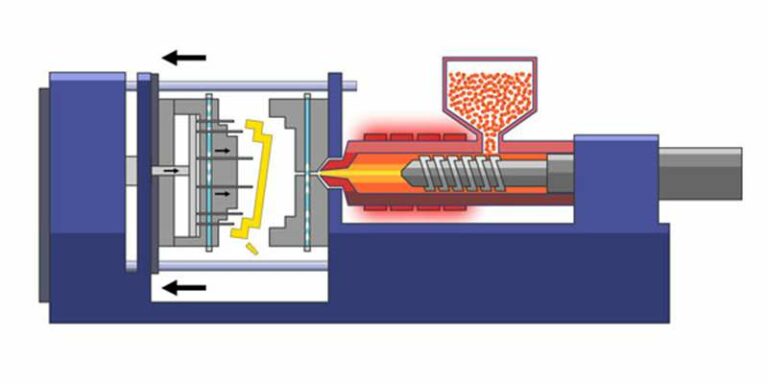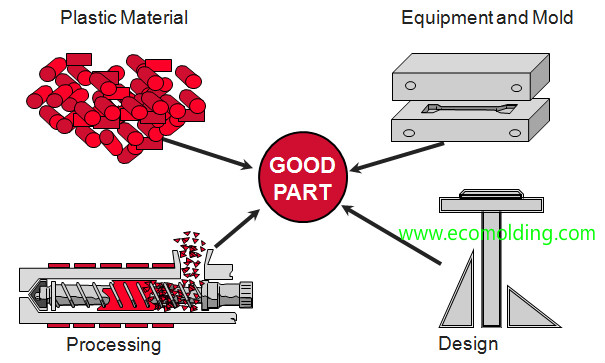Comprehending the Essentials of Plastic Injection Molding Processes
Plastic injection molding offers as a keystone of contemporary manufacturing, providing a methodical strategy to creating complex parts with accuracy. Exploring these important components might reveal just how even minor adjustments can lead to substantial enhancements in production end results, increasing concerns about the possibility for development in this established procedure.
What Is Plastic Injection Molding?
Plastic shot molding is a widely made use of manufacturing process that changes thermosetting and polycarbonate products into specific and complex forms. This strategy is favored for its capability to generate high volumes of the same parts with outstanding precision, making it a vital method in different sectors, including vehicle, durable goods, and clinical devices.
The process includes melting the chosen plastic material and injecting it right into a mold under high pressure. The mold and mildew, designed to the specs of the desired part, allows the molten plastic to materialize as it solidifies and cools. As soon as the product has actually hardened, the mold is opened, and the completed element is ejected.
Plastic shot molding supplies numerous benefits, including minimized waste, uniformity in production, and the ability to integrate complex styles that may be challenging with other producing techniques. Additionally, it supports a broad series of materials, each offering distinct properties that can be tailored for specific applications. As industries remain to innovate, plastic injection molding remains at the center, allowing the advancement of advanced products that fulfill evolving customer needs.
The Shot Molding Refine
The shot molding process is a sophisticated strategy that entails several essential stages to produce high-quality plastic components. At first, plastic pellets are fed right into a warmed barrel where they are merged a viscous liquid. This molten plastic is then infused under high stress right into a precision-engineered mold and mildew, which shapes the material right into the wanted kind.
Once the mold is filled up, the plastic is enabled to solidify and cool, taking the form of the mold dental caries. Cooling time is important, as it impacts the cycle time and the last buildings of the molded part. After enough air conditioning, the mold and mildew opens, and the ended up part is ejected utilizing ejector pins.

Materials Made Use Of in Injection Molding
Numerous products can be utilized in the injection molding process, each offering distinct homes that accommodate specific applications. One of the most typically utilized materials include thermoplastics, thermosetting plastics, and elastomers.

Thermosetting plastics, like epoxy and phenolic resins, go through a chemical adjustment during the curing process, causing a rigid, inflexible structure. These products are suitable for applications calling for high warm resistance and architectural honesty, visit this page typically made use of in electrical insulators and automobile components.
Elastomers, including silicone and rubber-based products, offer versatility and resilience. Their distinct properties make them appropriate visit their website for applications that require flexibility, such as seals and gaskets.
Additionally, specialized products like bio-based plastics and compounds are acquiring traction for their environmental benefits and improved performance features, broadening the scope of shot molding applications in different sectors. Comprehending the homes of these materials is crucial for selecting the proper kind for certain projects.
Benefits of Injection Molding
Injection molding stands apart as a highly reliable manufacturing procedure that uses many advantages for generating complex get rid of accuracy. One of one of the most considerable benefits is the capacity to develop intricate designs that would be difficult or impossible to accomplish with other techniques (Plastic Injection Molding). The process allows for in-depth attributes and tight tolerances, making sure high-quality components
Additionally, injection molding is recognized for its fast production capacities, making it a perfect selection for high-volume manufacturing. When the mold is produced, components can be generated rapidly, reducing lead times and increasing total efficiency. This effectiveness not just reduces production prices yet additionally provides an affordable edge in the market.
The flexibility of materials used in shot molding further improves its appeal. A wide variety of thermoplastics and thermosetting polymers can be used, enabling makers to select materials that ideal fulfill their particular requirements, including strength, adaptability, and heat resistance.
Moreover, the procedure minimizes waste, as excess material can usually be recycled and recycled. This sustainability facet contributes to a minimized ecological influence, making shot molding an accountable production option. Overall, the benefits of shot molding make it a recommended method for several sectors.
Aspects Affecting Product High Quality
While various variables can affect item high quality in shot molding, understanding these elements is important for achieving ideal outcomes. Key aspects include product selection, processing criteria, and mold and mildew layout.
Material option plays an essential function, as various polymers display distinct homes that influence flowability, stamina, and thermal stability. Inadequate material selection can bring about defects such as warping or insufficient dental filling.
Processing parameters, consisting of pressure, cycle, and temperature time, need to be diligently controlled. Variations in these setups can lead to disparities partially measurements and surface area coating. Exceedingly high temperature levels might create degradation of the polymer, while insufficient pressure can result in brief shots.
Mold and mildew design is just as important, as it establishes the flow of the molten plastic and the cooling process. Badly made mold and mildews may lead to uneven air conditioning prices, causing recurring tensions and dimensional mistakes.

Final Thought
Finally, plastic injection molding works as an essential manufacturing procedure that allows the effective manufacturing of top quality elements. Proficiency of the injection molding procedure, including the understanding of products and the impact of different aspects on item top quality, is essential for accomplishing optimum results. The advantages of this approach, such as cost-effectiveness and layout adaptability, additional highlight its relevance across multiple markets, solidifying its condition as a recommended option for high-volume manufacturing.
Plastic shot molding serves as a keystone of modern production, supplying a systematic technique to see here now producing complex parts with precision.Plastic injection molding offers a number of advantages, consisting of decreased waste, consistency in production, and the ability to integrate detailed layouts that might be testing with other producing methods (Plastic Injection Molding). As markets proceed to innovate, plastic shot molding continues to be at the center, enabling the development of sophisticated items that satisfy advancing consumer needs
The injection molding process is a sophisticated technique that entails a number of crucial phases to create premium plastic elements.In final thought, plastic injection molding offers as a crucial manufacturing procedure that enables the reliable production of high-quality elements.
Comments on “The Influence of Plastic Injection Molding on Lowering Manufacturing Expenses and Waste”